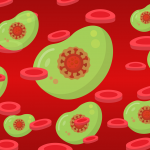Indonesian researchers discover three new species of moths

The three new species of moths are Cryptophasa warouwi, Glyphodes nurfitriae, and Glyphodes ahsanae. Clove farmers need to be wary of Cryptophasa warouwi because it has the potential to damage clove stems and twigs.
Bogor, W Java (Indonesia Window) – Researchers at the Biosystematics and Evolution Research Center of the Biological and Environmental Research Organization, Indonesia’s National Research and Innovation Agency (BRIN) and a team from the Faculty of Agriculture, Sam Ratulangi University in North Sulawesi province, have recently succeeded in identifying three new species of moths.
A press release from BRIN received here, Monday, stated that the three new species of moths are Cryptophasa warouwi, Glyphodes nurfitriae, and Glyphodes ahsanae. Clove farmers need to be wary of Cryptophasa warouwi because it has the potential to damage clove stems and twigs.
BRIN explained that Cryptophasa warouwi is a new endemic pest from Sangihe island, North Sulawesi, whose potential attacks need to be anticipated by farmers. This discovery will be useful for increasing the understanding about the diversity of Cryptophasa in the Wallacea region and explaining its pest status.
Meanwhile, two other new species of moths, namely Glyphodes nurfitriae and Glyphodes ahsanae, were identified as originating from Indonesia’s Papua province.
One of the researchers at the BRIN’s Research Center for Biosystematics and Evolution (PRBE) who was involved in the research, Hari Sutrisno, revealed that Cryptophasa larvae are known as branch and stem borer pests. These nocturnal animals cut leaves for food, make tunnels and cover the holes with webbing of silk and dung.
“In 2023, these (animals) attacks caused varying degrees of damage to clove plants in five sub-districts on Sangihe island, North Sulawesi. The investment resulted in damage to branches and twigs, which caused a decrease in leaf density on clove plants,” Hari explained.
Meanwhile, another BRIN’s researcher, Pramesa Narakusumo, added that since 2016 this species of larvae has been observed disturbing clove plants on Sangihe island, and in 2023 the distribution of this species continued to expand.
Furthermore, Pramesa said, based on the most typical diagnostic characteristics, the dark brown moth appears to have a firm structure on its genitals. Additionally, DNA barcoding shows the new species is related to other Cryptophasa species, despite having male antennae similar to those of the Paralecta genus.
The physical details of this new species are discussed in the journal Zootaxa Volume 5403 Number 1, published on January 18, 2024.
Sam Ratulangi University’s lecturer, Jackson F. Watung, also explained that recently his team also discovered the fact that not only does Cryptophasa warouwi attack clove plants, but also outbreaks water guava and guava plants (Myrtaceae).
“This threat can be categorized as an oligophagous insect pest attack, so it is very important to immediately develop a pest control strategy plan, pest risk analysis, develop a quarantine pest list, and other pest management,” Watung said.
Meanwhile, based on morphological analysis, Glyphodes nurfitriae and Glyphodes ahsanae were declared as new taxa in the journal Zootaxa Volume 5403 Number 4 on January 23 2024.
“The total number of Glyphodes recorded in Indonesia is currently 48 types. “The last publication about Glyphodes species from Indonesia’s main islands of Papua and Sulawesi was issued by Munroe in 1960. Since then no more species have been described from this region,” Pramesa noted.
According to him, these findings add a new dimension to the morphological criteria for categorizing Glyphodes species and underscore the importance of comprehensive morphological studies in refining taxonomy and systematics in the genus. Emphasis on genital characteristics and identification of potential new diagnostic features contributes to a deeper understanding of Glyphodes’ diversity.
According to Pramesa, the discovery of these three species of moths will certainly strengthen systematic knowledge which in the future could help in many cases of pest control and identifying biodiversity in Indonesia.
The discovery of these three new taxa will strengthen knowledge of the systematics of the Lepidoptera order so that scientists could determine the role of each type of moth in nature.
“If the character of this nocturnal animal is known to pose a threat, such as being a plant pest, of course this finding will be an important reference for the government to determine pest status, control policies, calculate the level of attacks and trace pest distribution areas in a region, so that farmers can avoid economic losses,” he added.
The certain name of the pest species could make identification easier and more effective, because each of them requires different pest control tactics.
Reporting by Indonesia Window










